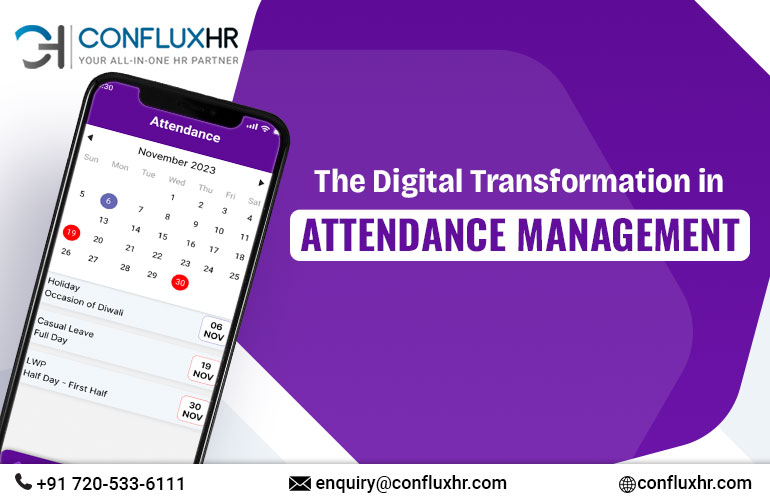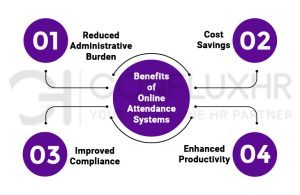Small and medium enterprises (SMEs) constantly seek efficient solutions to enhance their operational processes in the evolving business management landscape. One significant aspect of workforce management that demands attention is attendance tracking. Traditionally managed through manual methods, businesses are now transitioning to more advanced and streamlined approaches, particularly Online Attendance Systems.
Adopting An Attendance Management System
In today’s fast-paced world, where technology shapes the way we work, adopting an Online Attendance System is not just a trend but a necessity for businesses aiming to improve efficiency and accuracy in time and attendance management.
Why the Shift?
Accuracy and Accountability:
- Online Attendance Systems eliminate the possibility of errors associated with manual tracking, ensuring precise records of employee attendance.
- Accountability is enhanced as each clock-in and clock-out is digitally recorded, reducing disputes and promoting a transparent work environment.
Accessibility Anytime, Anywhere:
- An Online Attendance System allows employees to mark their attendance from anywhere with internet access.
- Ideal for businesses with remote workers or those operating in a hybrid model, the system ensures flexibility and accessibility.
Real-Time Monitoring:
- Employers can monitor attendance in real time, enabling prompt decision-making and intervention.
- Managers can track attendance trends, identify patterns, and address issues promptly.
Integration with HRMS:
- Integration with Human Resource Management Systems (HRMS) streamlines overall workforce management.
- It ensures seamless connectivity between attendance data, leave management and other HR functions.
How to Make the Transition:
Assess Your Needs:
- Identify the specific attendance tracking challenges your business faces.
- Determine the features required, such as geotagging, biometric recognition, or customizable reporting.
Choose a User-Friendly System:
- Opt for an Attendance Management System that is easy to use and doesn’t require extensive training.
- Consider the tech literacy of your workforce to ensure smooth adoption.
Ensure Data Security:
- Prioritize a system that emphasizes data security and compliance.
- Employee data is sensitive, and a secure system is crucial for maintaining trust.
Cost Considerations:
- Evaluate the costs associated with adopting a digital Attendance System.
- Compare pricing plans and choose a solution that aligns with your budget.
Employee Involvement:
- Communicate the transition to employees, highlighting the benefits.
- Provide training and support during the initial phases to ensure a smooth adaptation.
Conclusion:
In conclusion, the digital shift towards Attendance Systems is a technological upgrade and a strategic move for SMEs seeking improved efficiency, accuracy, and overall workforce management. The ease of use, accessibility, and integration capabilities make these systems indispensable for businesses aiming to thrive in the digital age.
As you embark on this digital transition, consider solutions that align with your business’s unique needs and dynamics. Adopting an Online Attendance System is not just an investment in technology; it’s an investment in your business’s future success and sustainability.





